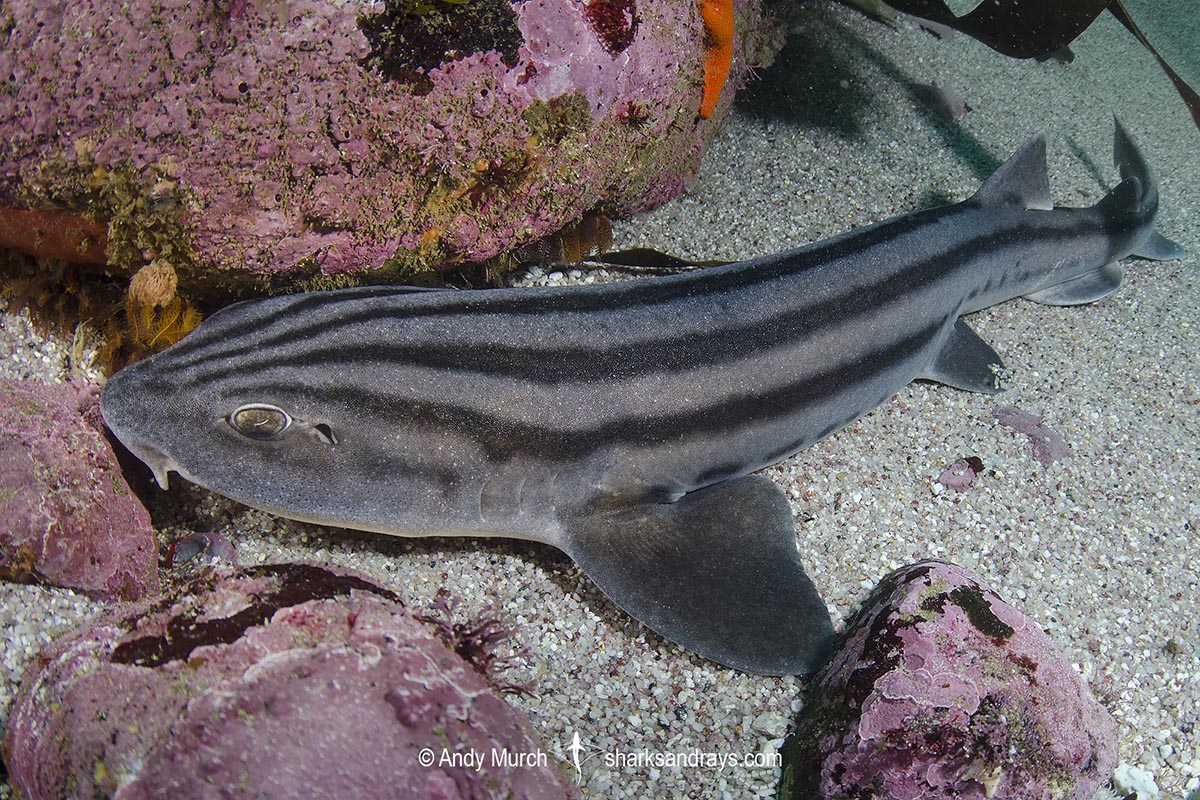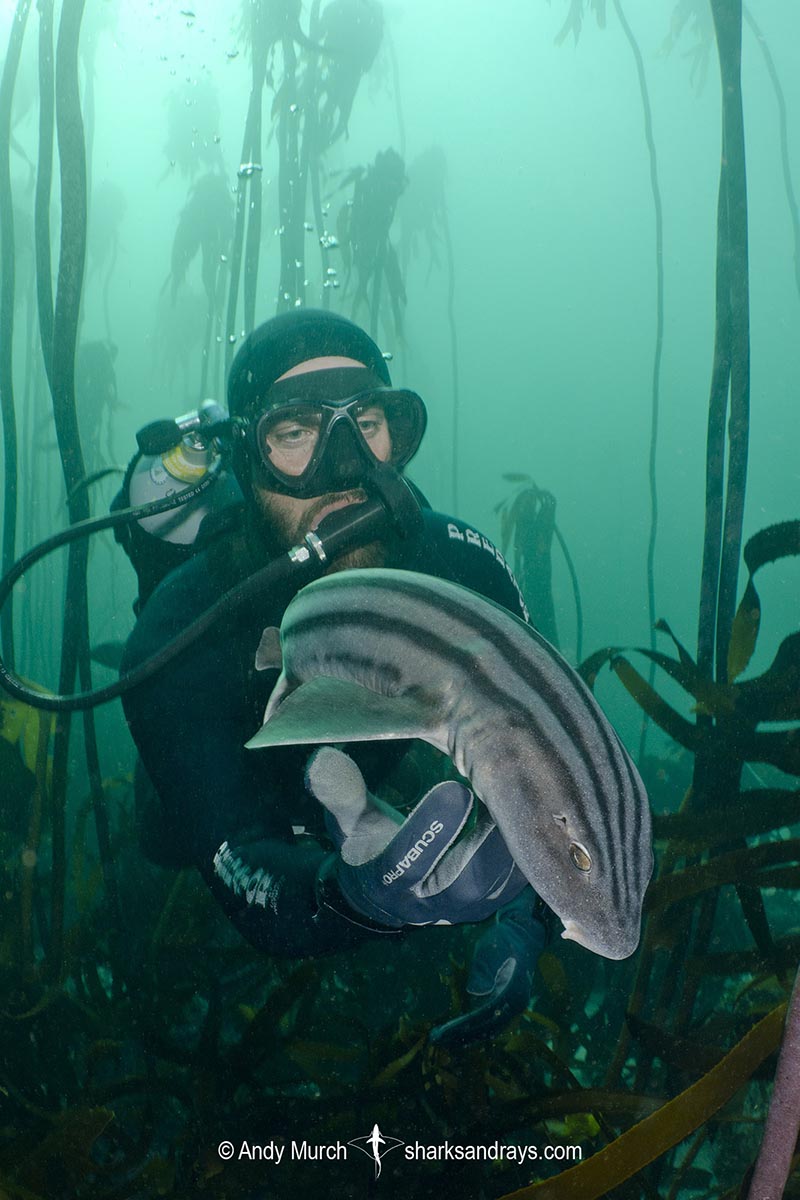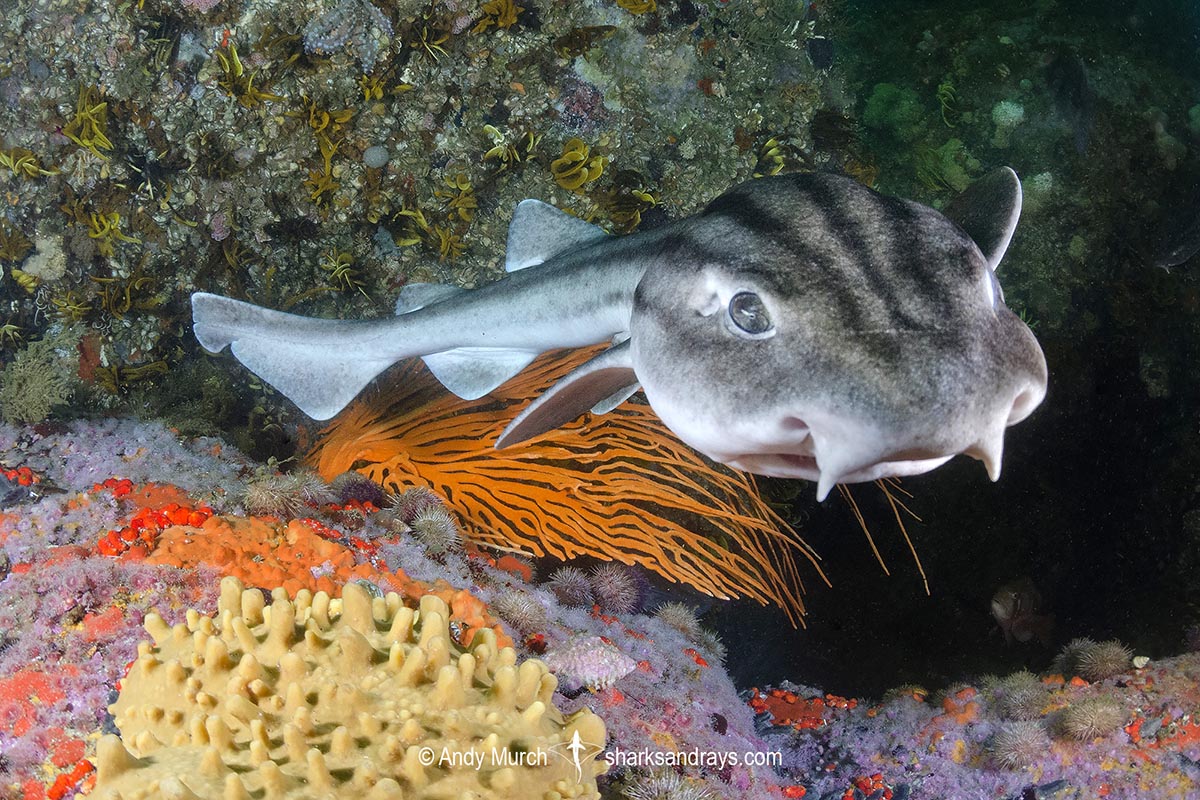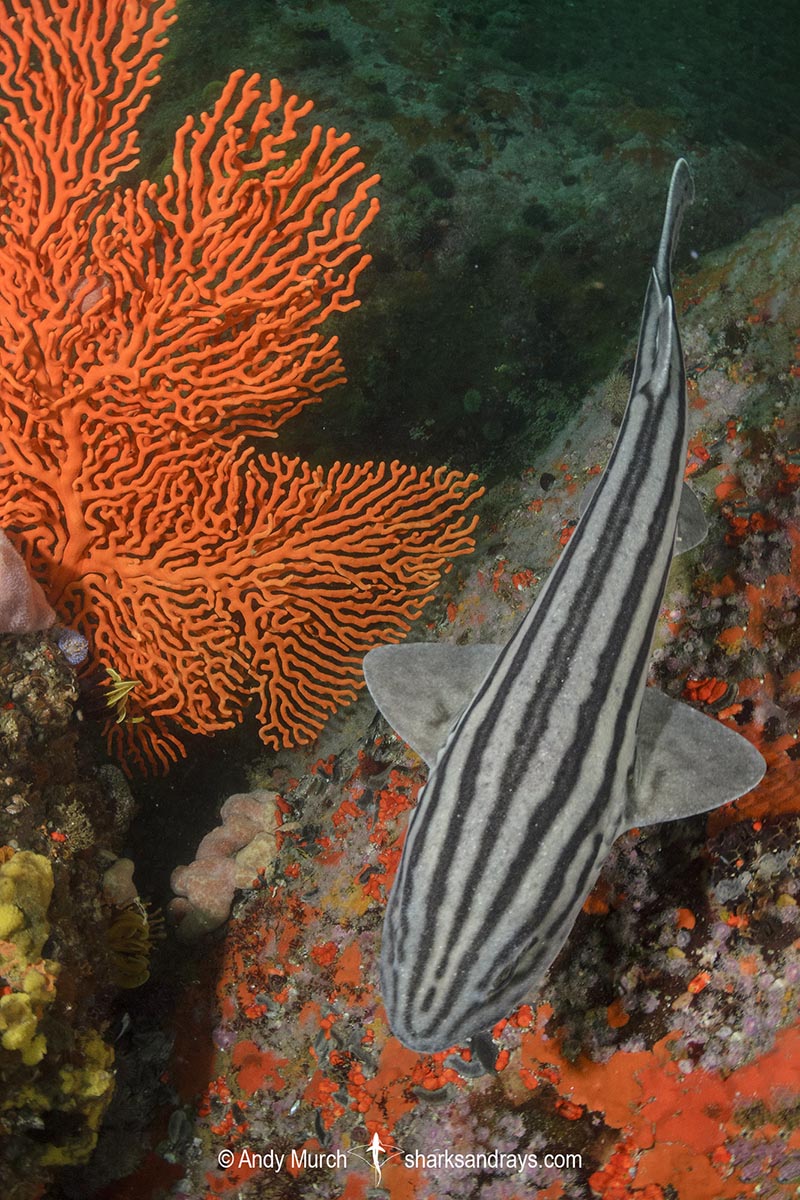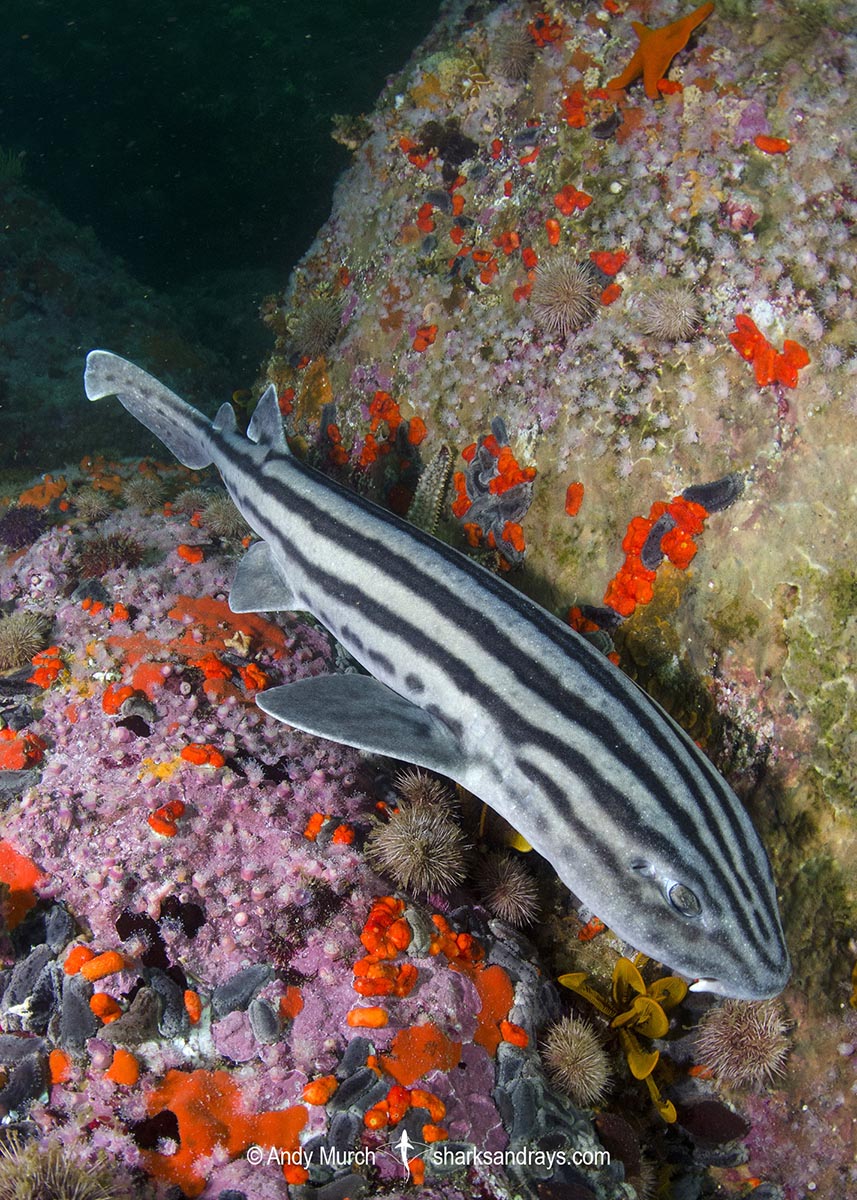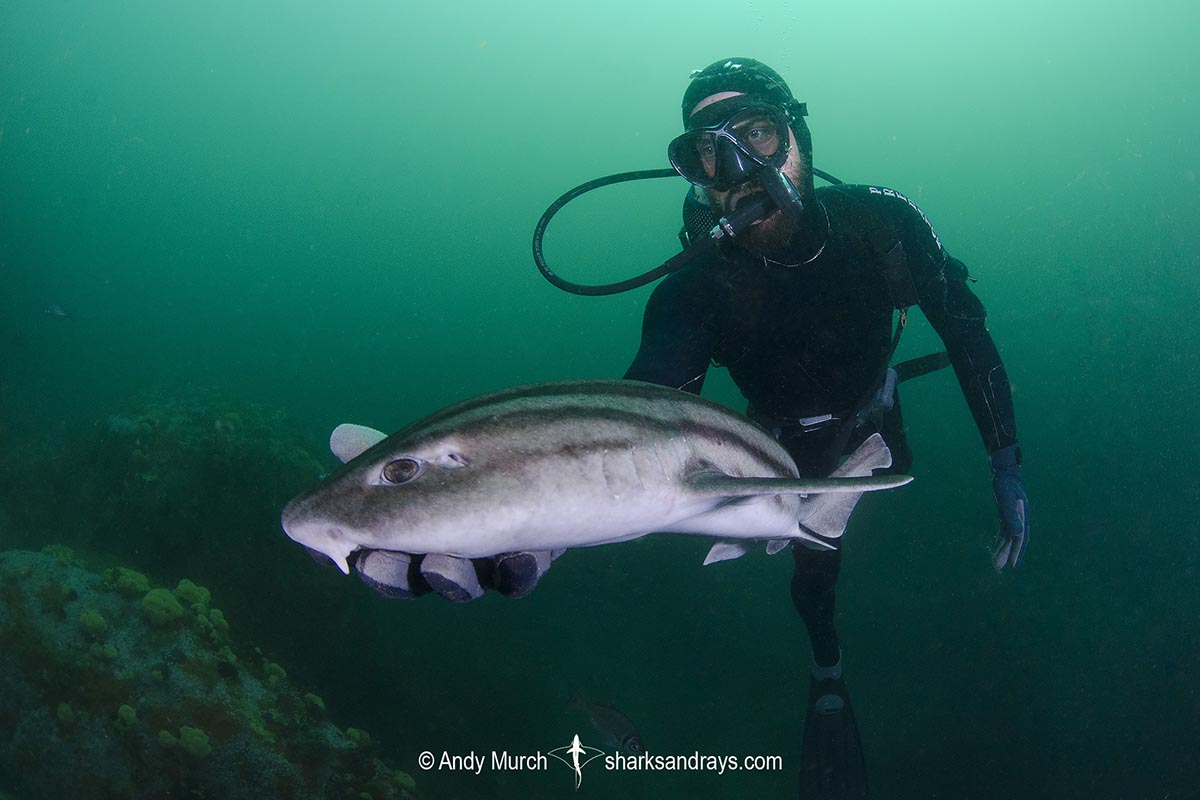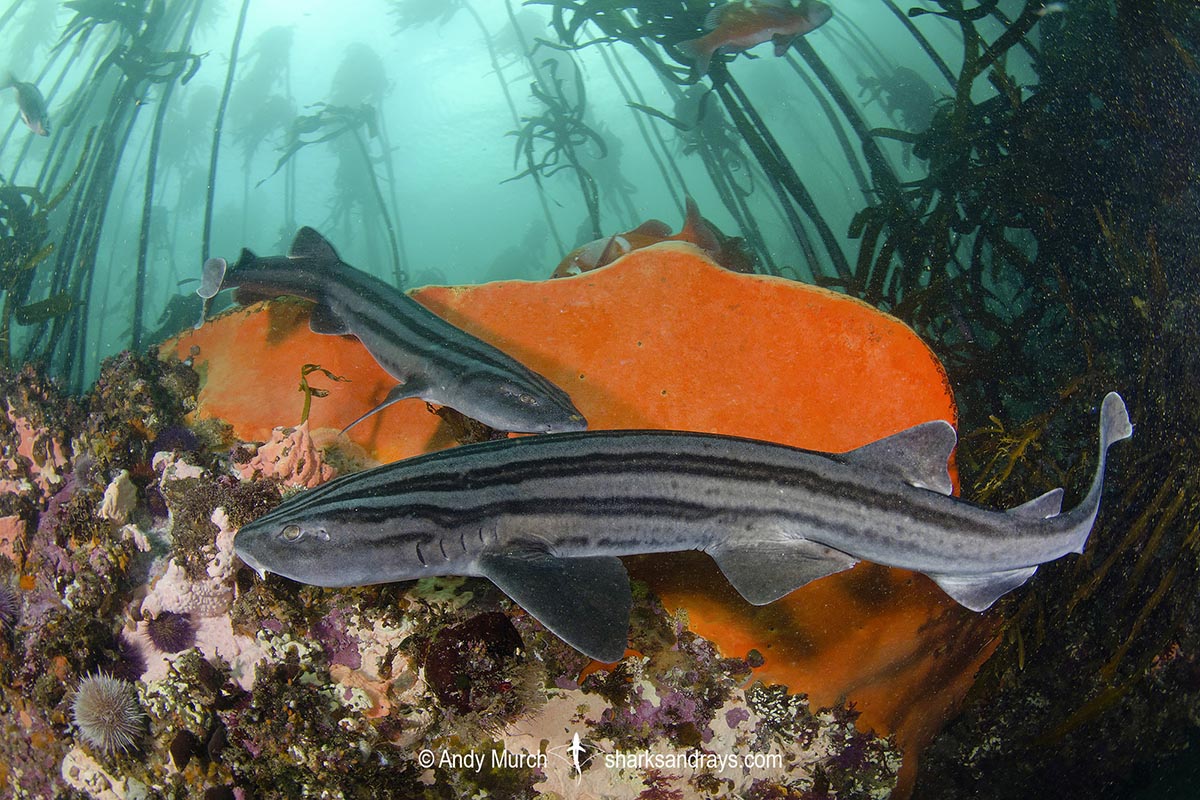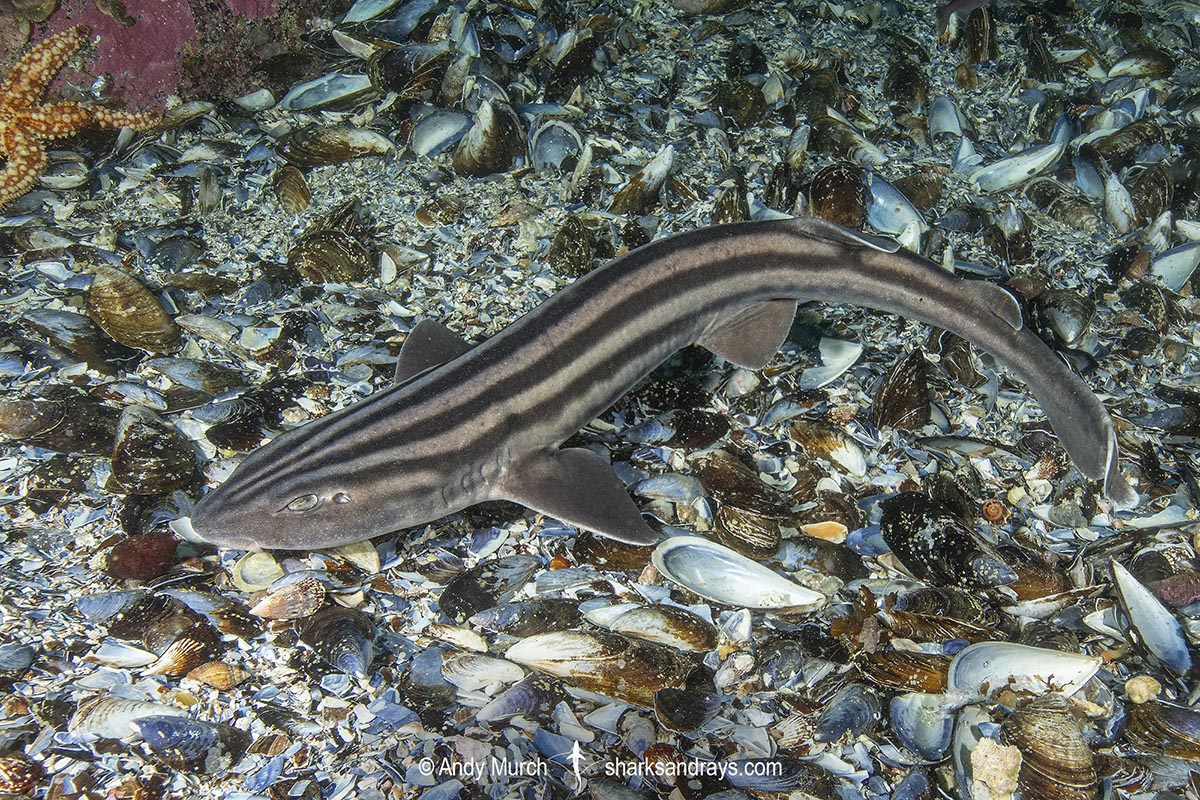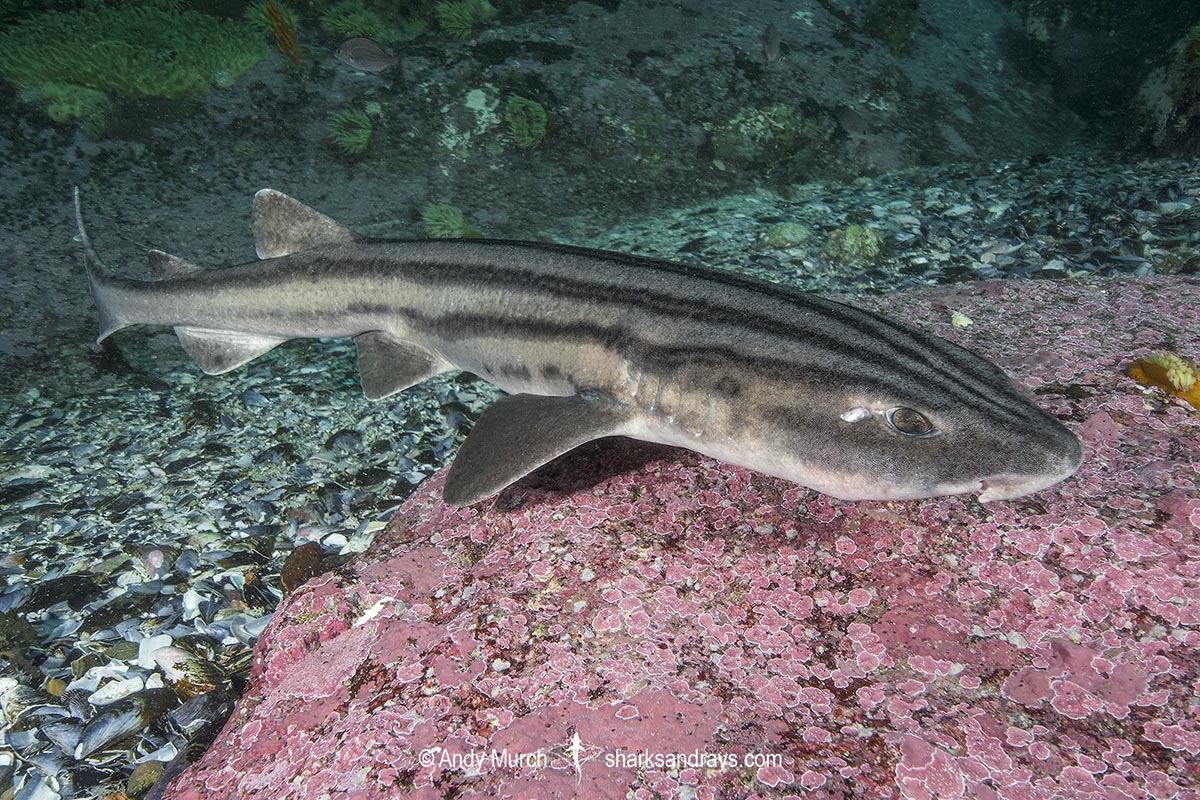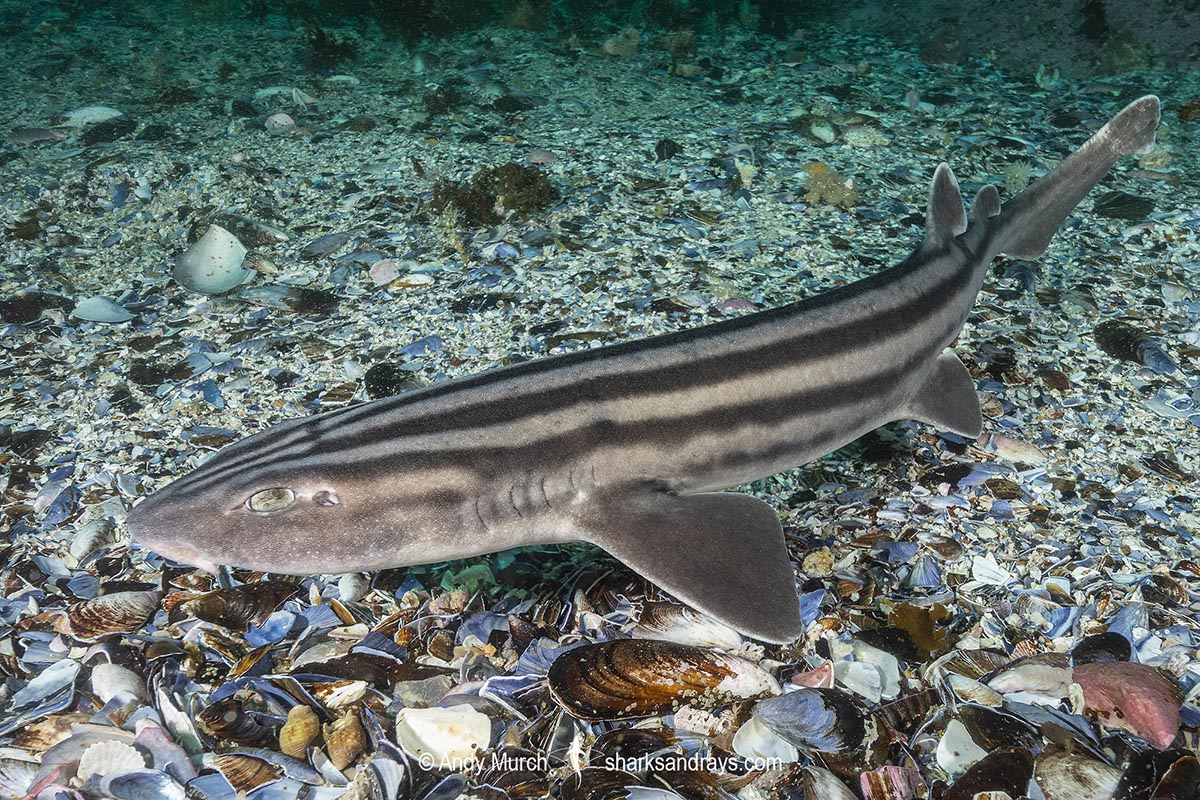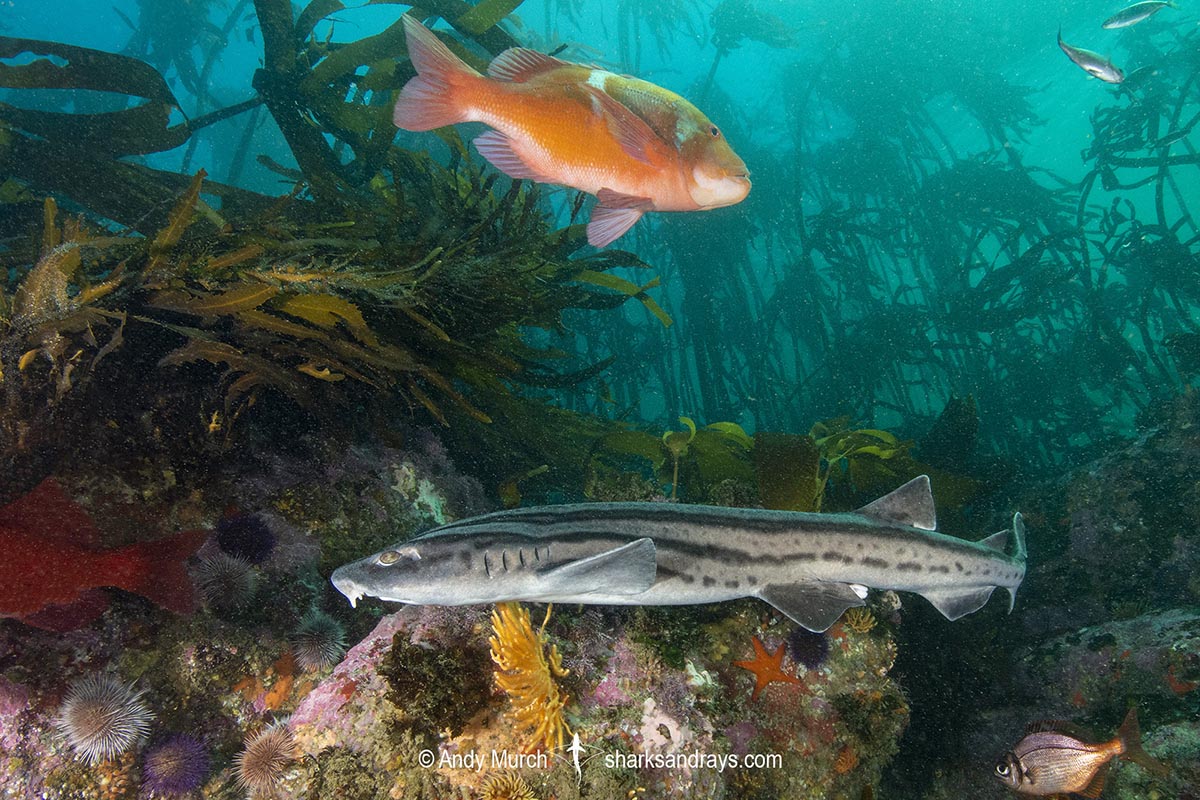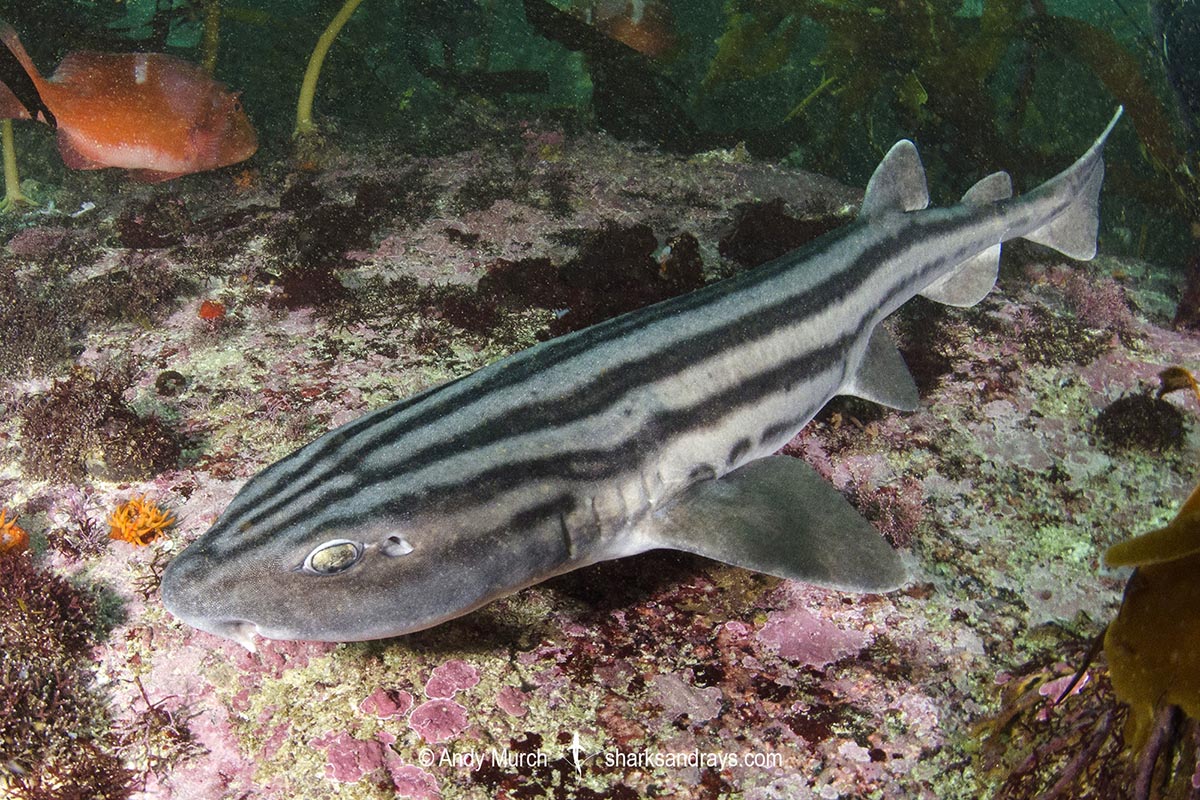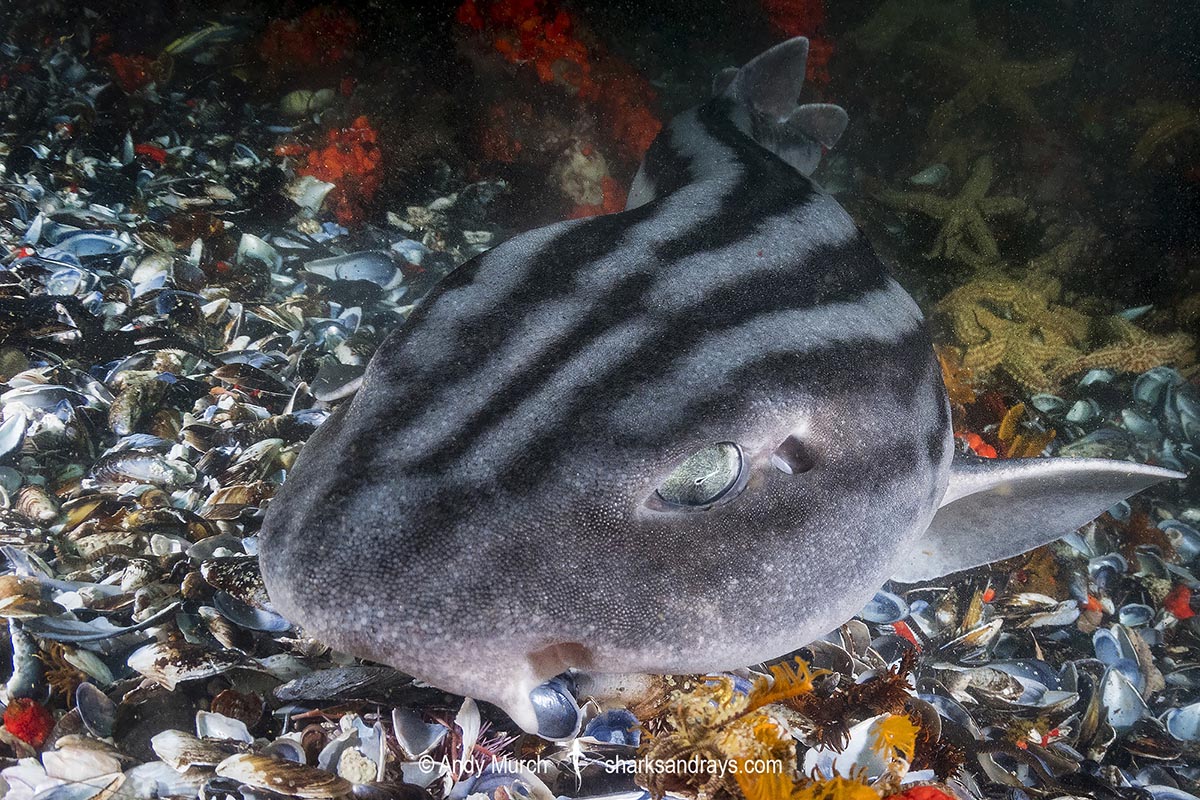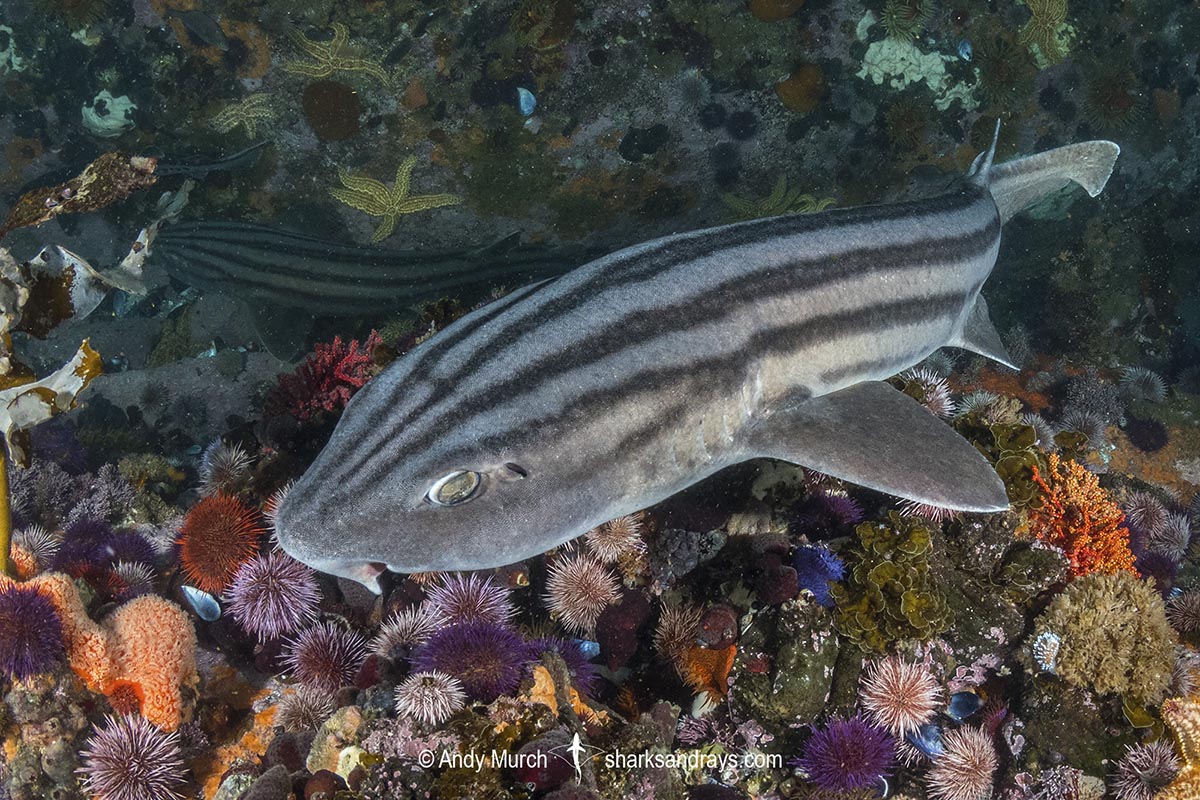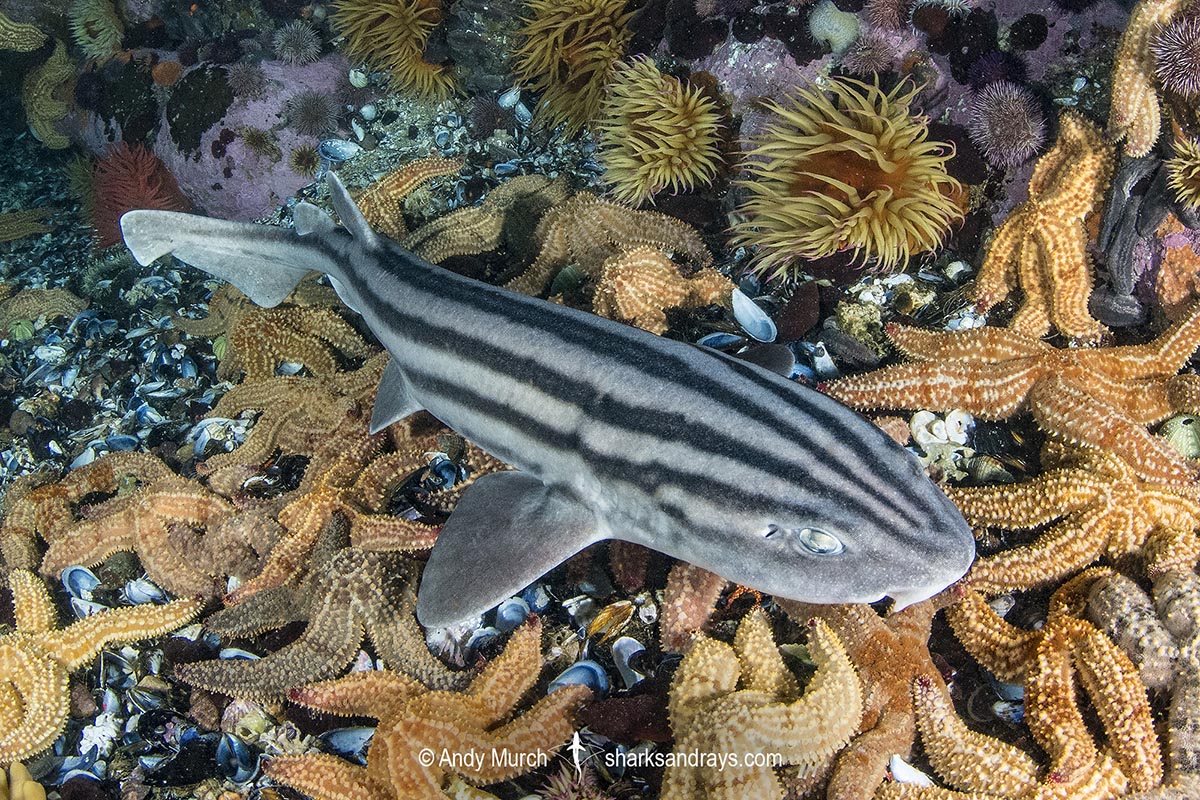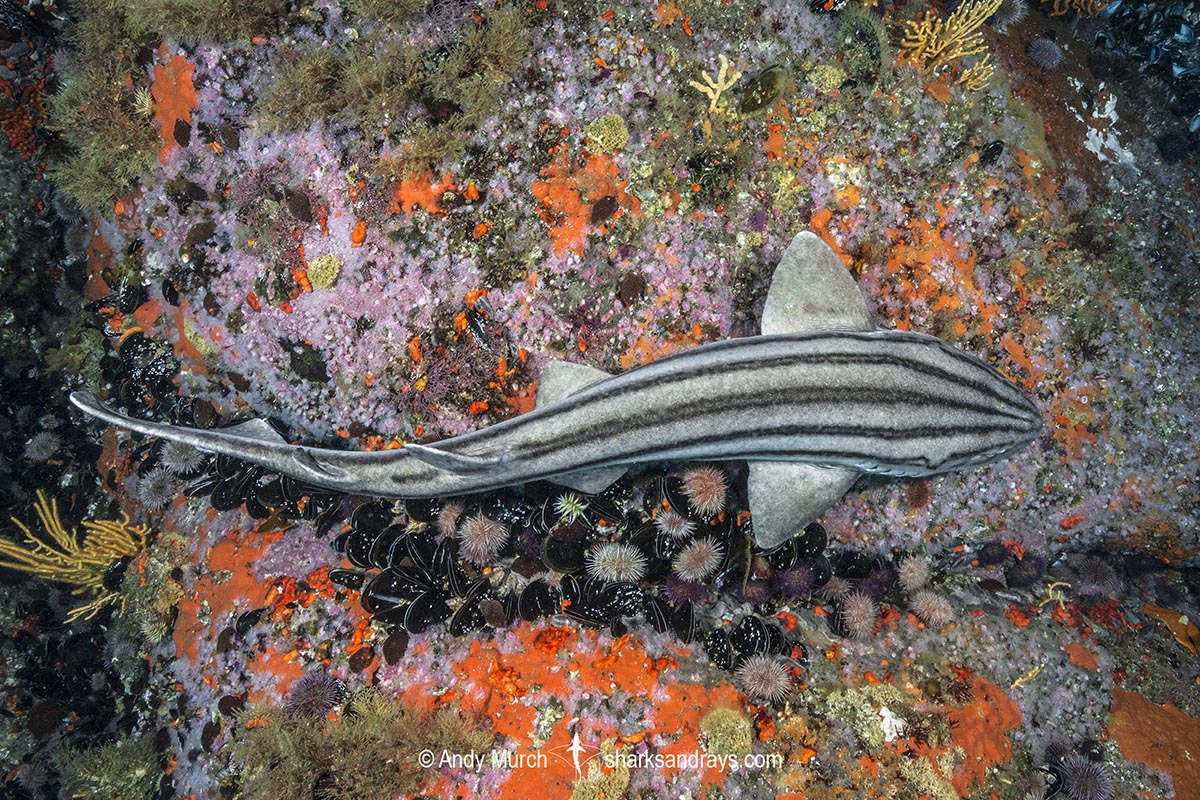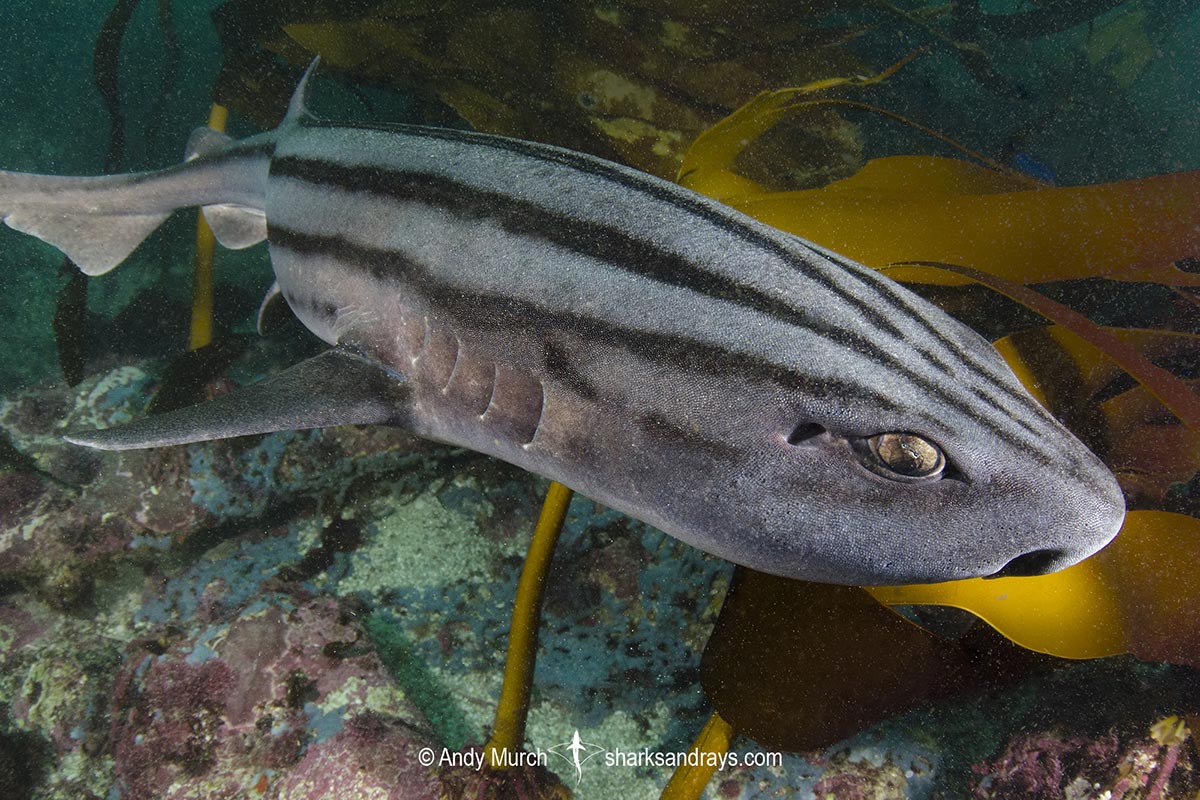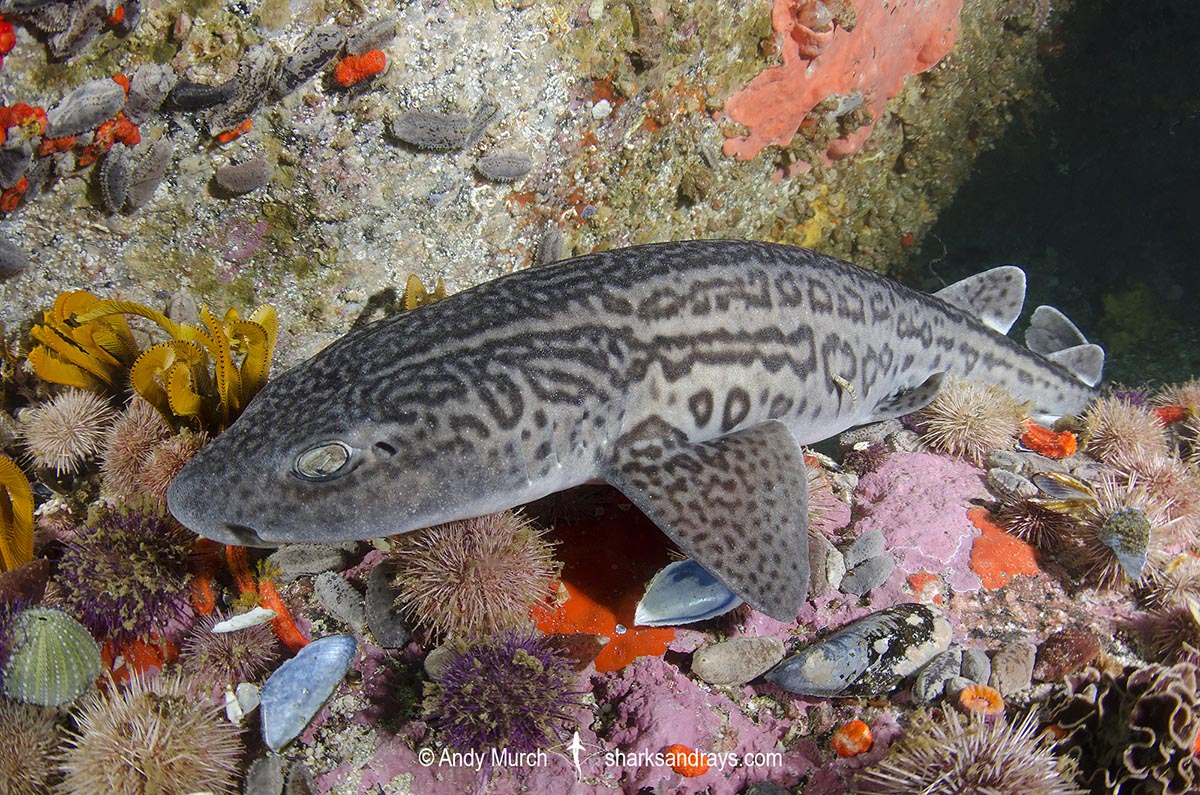Common names
Pyjama Catshark, Pyjama Shark, Striped Catshark.
Binomial
Poroderma africanum.
Synonyms
Conoporoderma africanum, Scyllium africanum, Squalus africanus, Squalus striatus, Squalus vittatus.
Identification
A relatively large catshark. Snout bluntly rounded. Mouth width greater than snout length. First dorsal origin approximately level with pelvic fin insertion. Second dorsal fin level with middle of anal fin base. Anal fin larger than second dorsal. All fins relatively long and low. Upper caudal subterminal notch well defined. Dorsal surface grey/olive with bold longitudinal black stripes.
Size
Maximum length 109cm. Size at hatching 14-17cm.
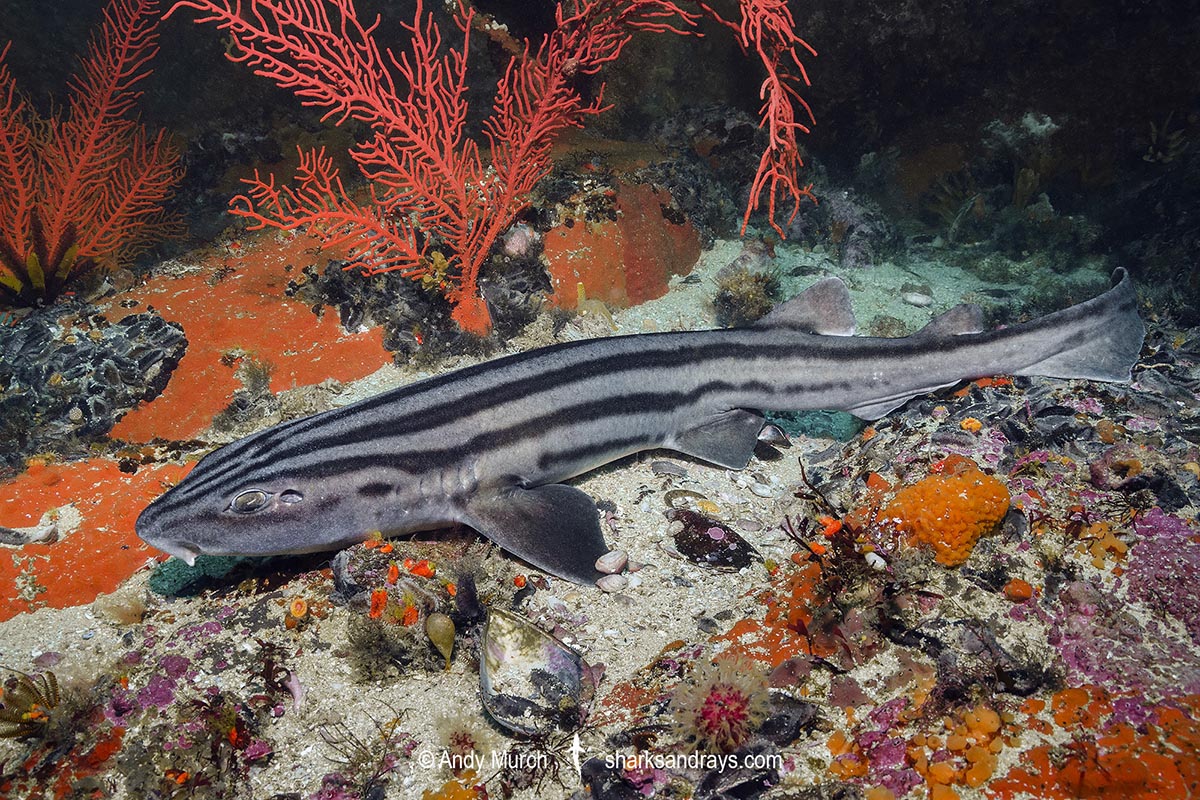
Conservation Status
LEAST CONCERN
The Pyjama Shark is bycatch component of longline, gillnet, beach seine, trawl, and commercial and recreational line fisheries, but fisheries data indicates an increase in abundance of 133% over the last 75 years. This may be partly due to a decrease in trawling activity, the species preference for rocky envirnments where large scale fishing is difficult, and this species naturally high fecundity.
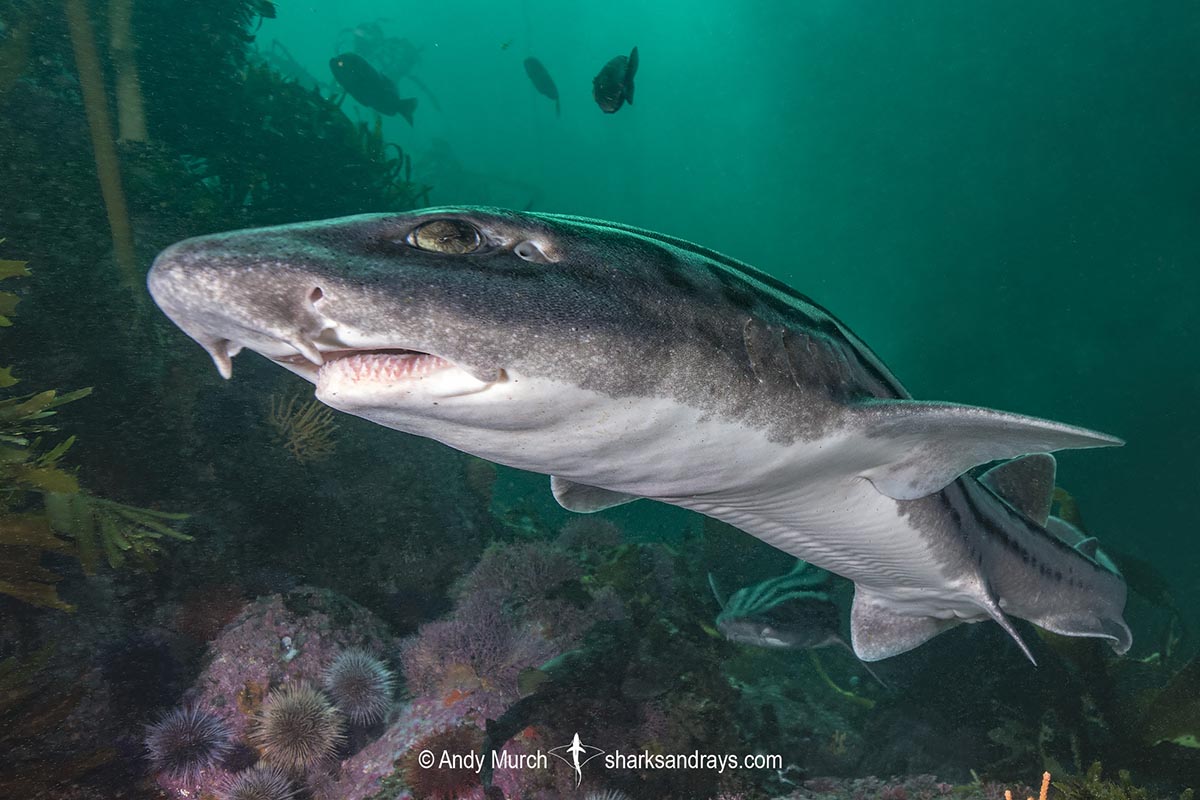
Habitat
A temperate water species found on rocky reefs, kelp forests, caves, and mixed sand and rock. Intertidal to at least 108m.
Distribution
The pyjama catshark has a small range on the southern coast of South Africa. Common on the east and west capes, occasionally eastwards to KwaZulu-Natal.
Reproduction
Oviparous. One egg per oviduct. Hatching times recorded at 5.5 months in captivity.
Diet
The pyjama shark consumes small bony fishes, hagfishes, and small sharks, as well as a wide assortment of molluscs and crustaceans.
Behavior
Mostly nocturnal. Rests in caves during the day.
Reaction to divers
Fairly easy to approach when resting on the reef. Extremely bold but not aggressive in baited situations.
Diving logistics
The pyjama catshark can be encountered at many rocky or kelpy dive sites in and around False Bay. For example, at Miller’s Point on the west end of Simonstown; a popular spot that can be dived by boat or from shore if the surf is not too high. Divers visiting this excellent site are likely to see numerous pyjama sharks, plus 3-4 other catshark species, as well as spotted gully sharks, and sometimes sevengill sharks.
False Bay is the first stop on Big Fish Expeditions’ South African Endemic Shark and Ray Expedition.
Similar species
Leopard Catshark Usually distinguishable by its bold pattern of leopard-like spots but some individuals have lines similar to the pyjama shark.

